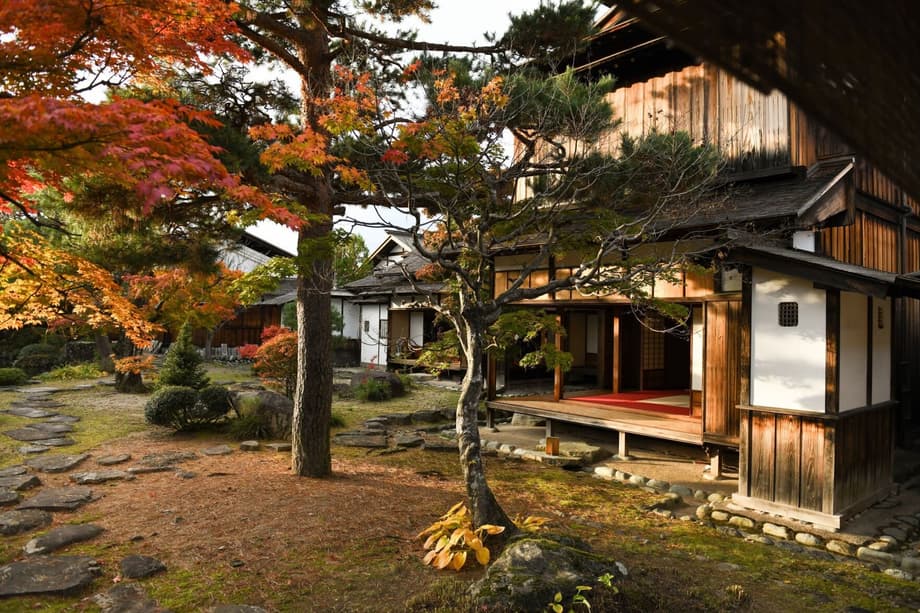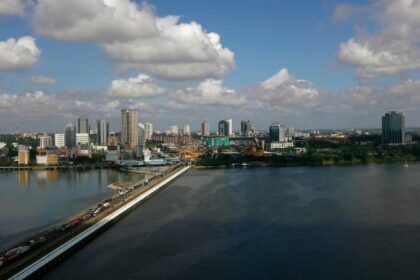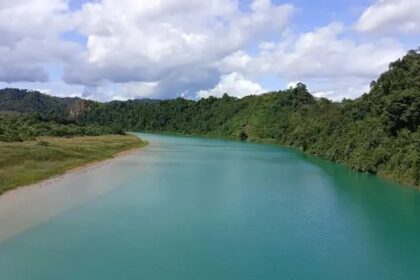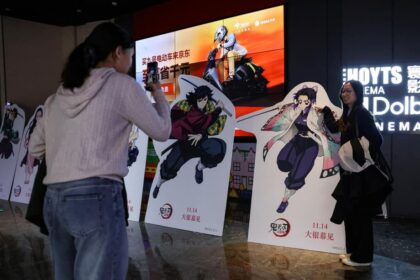A season of color and a tradition called momijigari
Autumn in Japan arrives like a wave, rolling from the north and high mountains down toward the southern islands. As temperatures dip, maples flash crimson, ginkgo turn a bold gold, and river valleys glow in amber light. The experience has a name that is both poetic and practical. Momijigari, often translated as hunting autumn leaves, describes the annual ritual of seeking out peak color in parks, temples, and mountain trails. The word momiji refers to maple leaves and the many shades they produce. The word gari signals the search, a nod to the way residents consult forecasts and follow elevation to time their outings. The pastime dates to the Heian court, but it is now a favorite national habit that mixes outdoor time, good food, and reflection on nature.
- A season of color and a tradition called momijigari
- When to go for peak color
- A three day momijigari loop through the Japanese Alps
- Kyoto after the mountains: temples, gardens, and night lights
- Top alternatives across Japan for momijigari
- Culture, cuisine, and seasonal festivals
- Practical planning tips
- What to Know
Travelers encounter this season under two common terms. Koyo is the broader transformation of leaves in red and yellow, while momijigari focuses on leaf hunting as an activity. Both carry a cultural thread of impermanence and appreciation. Many towns host night illuminations, gardens present special paths, and mountain inns draw visitors who want to soak in hot springs while steam rises in cold air. Maple shaped sweets, roasted chestnuts, and grilled sanma fish fill seasonal menus. The experience feels simple on the surface, yet it asks for a modest plan, a comfortable pace, and an eye for small details like light on larch needles or a single red leaf on a temple stone.
When to go for peak color
Autumn color typically appears from mid September in Hokkaido then moves south and down in elevation through early December. Broad timing by region is a helpful guide. Hokkaido usually peaks from late September to early October. The Tohoku region and the Japanese Alps see strong color in early to mid October at higher elevations, then late October into November in towns and valleys. The Kanto and Kansai areas, including Tokyo, Kyoto, and Osaka, often turn from late October through early December. Southern zones like Kyushu lean toward mid November into early December. A sudden cold snap can pull the schedule earlier. A warm, long summer can push it later.
Elevation matters as much as latitude. A mountain pass may blaze weeks before a nearby city. If you plan to mix cities with alpine walks, aim for late October to mid November in the Alps and early to mid November in Kyoto and Tokyo. For the latest timing, use national foliage trackers and local tourism updates, and consider an annual forecast that aggregates weather trends and elevation notes. A useful overview of the tradition, plus links to viewing ideas, is available from the Japan National Tourism Organization at this momijigari page.
A three day momijigari loop through the Japanese Alps
Many visitors head straight to Kyoto for leaf viewing. A short loop through the Northern Alps offers a calmer start, plenty of color, and a taste of Japan’s mountain culture before arriving in the old capital. The route connects Matsumoto, Kamikochi, Okuhida hot springs, Hida Takayama, and then continues by rail to Kyoto. It blends trains and buses, short hikes and waterfall views, seasonal food, and stays at traditional inns. You see larch and maple, rivers in blue green, and towns that preserve Edo era streets.
Day 1: Tokyo to Matsumoto for castles, art, and soba
Ride the bullet train from Tokyo to Nagano, then continue by local train to Matsumoto, a compact city set against peaks of the Northern Alps. Start with Matsumoto Castle. The black keep stands above a moat and stone walls, and its interiors show how feudal lords defended the region. Just beyond, the Matsumoto City Museum of Art often features works tied to the region, and many travelers come to see the colorful pieces by Yayoi Kusama. In the afternoon, stroll Nakamachi Street with its white walled storehouses and craft shops.
Nagano prefecture is famous for buckwheat. A dinner of hand cut soba noodles, served cold with dipping sauce or in hot broth, is a local staple. Some shops offer soba making classes that double as a dinner plan. For the night, consider an onsen hotel in the Asama Onsen area. Rooms may be in Japanese style with tatami and futon or in western style with beds. Soaking before bedtime under mountain air is an ideal reset after train travel. In shared baths, wash and rinse well before entering the water, keep towels out of the pool, and move quietly to maintain the calm atmosphere.
Day 2: Kamikochi’s river lights and Okuhida hot springs
Buses run up the valley to Kamikochi, the gateway to Chubu Sangaku National Park. Private cars do not enter the central zone, which keeps the valley peaceful. Trails near Kappa bashi bridge, Taisho Pond, and Myojin Pond offer easy, flat walks. Yellow larch needles glow in low sun, and the Azusa River runs a startling blue green in clear weather. Stop at a simple mountain cafe for a snack of buckwheat dumplings or apple pie, both local comforts as the air cools.
Hikers with proper gear and experience can continue to longer routes, but even short walks reveal mountain wildlife. You may see Japanese macaques across the riverbank, often as they forage along the trail edges. Black bears do inhabit the region, so many walkers wear bear bells and make a light sound as they go. After the valley, head over the pass to the Okuhida Onsengo area. The village of Fukuji offers a classic mountain stay. At a ryokan, change into a cotton yukata after check in and try the outdoor bath as twilight arrives. Dinner often comes as kaiseki, a progression of seasonal dishes that could include river fish, local vegetables, and beef grilled over a small charcoal grill. A second soak under cool night air caps the day.
Day 3: Waterfalls and Edo era streets in Hida Takayama
After a simple breakfast, take a bus down to Hida Takayama. The preserved districts feature dark wood facades, sake breweries with sugidama cedar balls hanging above their doors, and narrow streets that fill with morning light. If time allows, continue by short train ride to Utsue 48 Waterfalls Prefectural Park. A loop trail climbs through a forest of maple, and in midday sun the falls and red leaves make a striking contrast.
Back in town, stop at Kitayama Park for broad views, then visit the Sakurayama Nikkokan to see festival floats and learn how the city builds its famous processions. If you enjoy traditional architecture, Hida no Sato presents thatched farmhouses and rural tools in an open air museum setting. For a farewell meal before the evening train, try Hida beef, marbled and rich, served as nigiri or grilled slices. A small sake tasting makes sense here too, since Takayama has long running breweries. After dinner, board a limited express to Nagoya and transfer to a bullet train to Kyoto, carrying the calm of mountain trails into your nights in the old capital.
Kyoto after the mountains: temples, gardens, and night lights
Kyoto’s foliage often peaks from mid November and carries into early December. The city is dense with temples and gardens that feel built for this exact season. Eikando becomes a sea of red. The view from its pagoda across a slope of maples is often a highlight. Tofuku ji is famous for the Tsutenkyo bridge and the checkerboard moss garden that frames color in neat geometry. Kiyomizu dera places visitors above a forested hillside, where the main hall appears to float in a frame of leaves.
The Arashiyama district pairs riverside walks with hillsides that burn with color at sunset. Across the area, many gardens host evening illuminations. Lines can be long, so arrive early and pick one or two night events rather than racing between several. On cool days, a tea ceremony in a temple garden offers a warm pause. For food, stroll Nishiki Market to sample seasonal sweets, roasted sweet potato, and persimmons. Light layers, warm socks, and a compact umbrella help you adapt to rapid shifts between sunny afternoons and chilly nights.
Top alternatives across Japan for momijigari
With more days, you can pair the Alps loop with destinations that show different faces of the season, from remote gorges to classic city gardens. Each offers a distinct setting for leaf hunting, and most are reachable by train with short transfers.
- Rikugien Garden in Tokyo, a stroll garden designed around scenes from poetry, shines in late November with night illuminations around a central pond.
- Mount Takao west of Tokyo offers seven walking trails and a cable car through tunnels of crimson leaves, with views back toward the city on clear days.
- Nikko in Tochigi features Lake Chuzenji, Kegon and Ryuzu Falls, and the winding Irohazaka road, all ringed by color in late October and November.
- Kurobe Gorge in Toyama pairs a narrow gauge sightseeing train with bridges and tunnels carved into a dramatic river canyon, in peak from mid October to mid November.
- Lake Kawaguchi in Yamanashi frames Mount Fuji with maple corridors and lakeside walks that glow in afternoon light.
- Daisetsuzan National Park in Hokkaido turns first, with high peaks covered in red and gold often by mid September, then valleys following through early October.
- Naruko Gorge in Miyagi peaks from mid October to early November, with a famous bridge view and a riverside trail.
- Kyoto standouts include Eikando, Tofuku ji, Kiyomizu dera, and the Arashiyama riverbanks, each with carefully planned paths for crowd flow.
- Fukuoka’s Kamado Shrine in Dazaifu creates a tunnel of maples and ginkgo near the main approach in late November, and the Hiraodai plateau offers fields of silver and gold pampas grass.
These choices let you balance city walks with mountain air, train rides with gentle hikes, and quiet temple corners with bright festival nights.
Culture, cuisine, and seasonal festivals
Autumn food in Japan feels both comforting and celebratory. You will find chestnut rice, roasted sweet potatoes sold from trucks or market stalls, crisp persimmons, and mushrooms in broth. Matsutake mushrooms are prized and appear grilled or in clear soup. Soba and udon come topped with seasonal greens. Regional desserts include maple leaf shaped sweets, and in some areas pastry chefs present apple cakes that match the season. Many inns close dinner with fruit and a small wagashi to echo the colors outside.
Festivals link harvest, craft, and the changing of light. Kyoto’s Jidai Matsuri marks the city’s long history with processions in period dress. The Takayama Autumn Festival features towering floats and deft woodwork. In Hokkaido, food festivals fill parks with seafood and local beer. Some regions also host canal or river parades lit by lanterns. Pairing a night illumination at a temple with a local festival creates a strong contrast between quiet contemplation and public celebration.
Onsen culture fits the season. Public baths are typically separated by gender. Wash and rinse thoroughly before entering the pool. Keep your towel out of the water. Many facilities post guidance in English and Japanese. If you have tattoos, check the policy in advance, as rules differ by bath. Private baths can be booked at some inns if you prefer a more secluded soak.
Practical planning tips
Reserve early. Autumn is a peak season in many regions and rooms near famous leaf spots fill quickly. Aim to book six months ahead for Kyoto and for popular ryokan. Build flexibility into your route so you can trade a crowded garden for a quieter park if forecasts shift. Weekday visits and early starts will help you pass through famous gates and bridges with less waiting.
Trains and buses reach almost every place mentioned here. The bullet train connects Tokyo, Nagoya, Kyoto, and beyond. Limited express trains handle mountain legs, and local buses run to trailheads like Kamikochi. If you plan long rail days, consider a rail pass that fits your itinerary. In towns, rent a bicycle in flat areas like Matsumoto or walk when distances are short. Taxis are useful after night illuminations when buses thin out.
Pack in layers. Expect mornings in the single digits Celsius in the Alps and mild afternoons in cities. A light down jacket, a warm fleece, a scarf, and gloves fit easily in a daypack. Comfortable walking shoes with good grip help on damp temple stones and leaf covered trails. Carry cash for small shops and tea stands. Many vendors accept cards, but some rural stops remain cash based.
Stay aware on trails. Weather can change quickly in the mountains. Tell your inn where you plan to walk if you go beyond the main loop paths. Obey closure signs near riverbanks. In areas with wildlife, do not feed animals. Keep a respectful distance from macaques. Simple steps like a small bell and steady footwork make for a calm day outside.
To learn more about the tradition and discover new leaf hunts in future trips, consult official tourism resources, including the season overview from the national tourism organization at JNTO’s momijigari page, and a national foliage tracker or forecast that updates as temperatures change.
What to Know
- Momijigari means hunting autumn leaves and refers to the practice of seeking peak color across parks, temples, and mountain trails.
- Color appears first in Hokkaido and high elevations from mid September, then moves south into early December.
- The Japanese Alps often peak from early to mid October at higher altitudes and late October into November in towns and valleys.
- A three day Alps loop pairs Matsumoto, Kamikochi, Okuhida hot springs, and Hida Takayama, then continues by rail to Kyoto.
- Kyoto’s marquee temples, including Eikando, Tofuku ji, and Kiyomizu dera, deliver top views with night illuminations in mid to late November.
- Alternative spots include Rikugien in Tokyo, Mount Takao, Nikko, Kurobe Gorge, Lake Kawaguchi, Daisetsuzan, and Naruko Gorge.
- Autumn menus feature chestnuts, sweet potato, persimmon, and matsutake mushrooms, with many inns serving seasonal kaiseki dinners.
- Onsen etiquette includes washing before entering, keeping towels out of the water, and checking tattoo policies in advance.
- Book popular stays and trains early, aim for weekday visits, and follow national and local foliage forecasts for timing.
- Pack layers for cold mornings and mild afternoons, and wear shoes with grip for temple steps and leaf covered paths.












